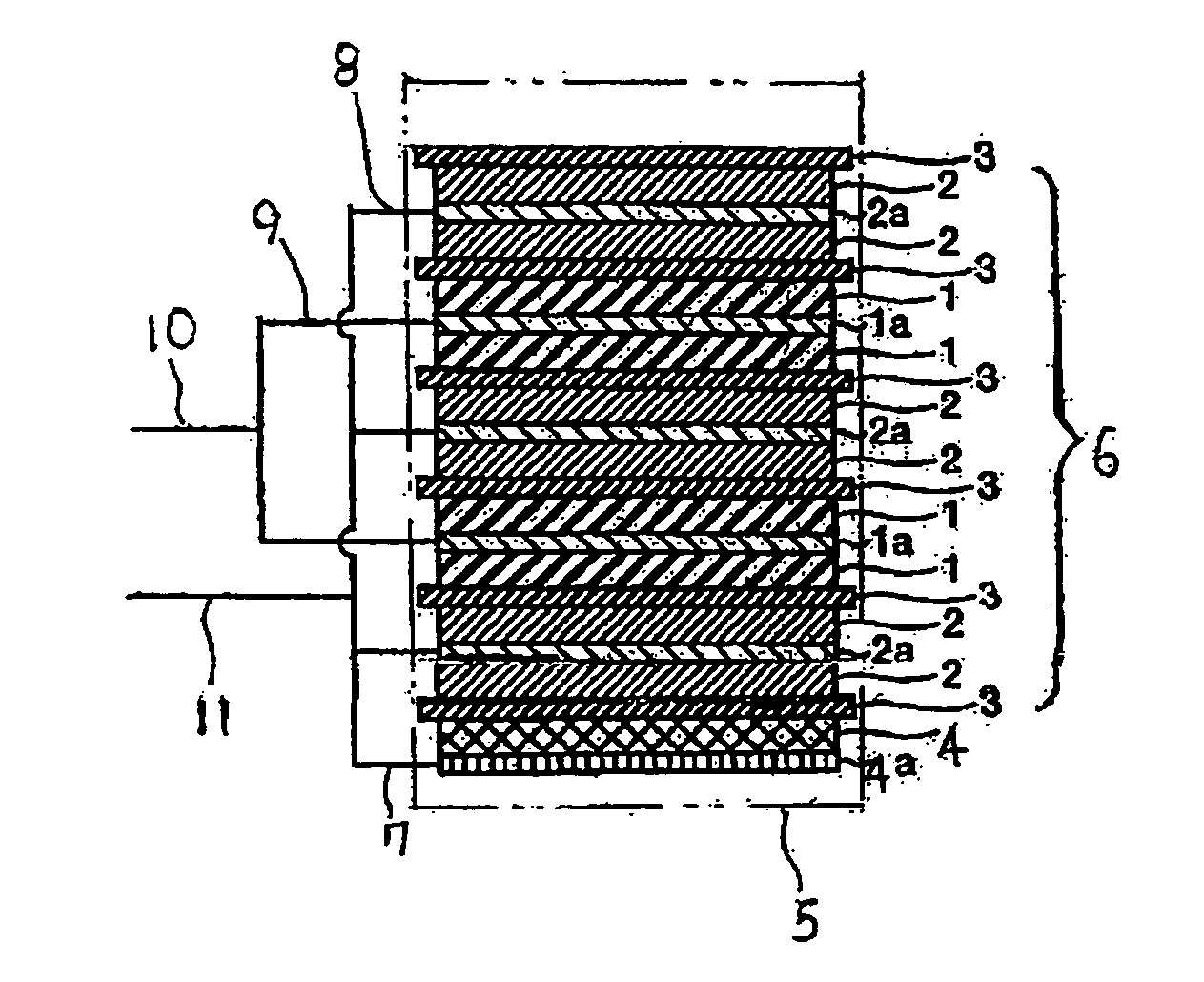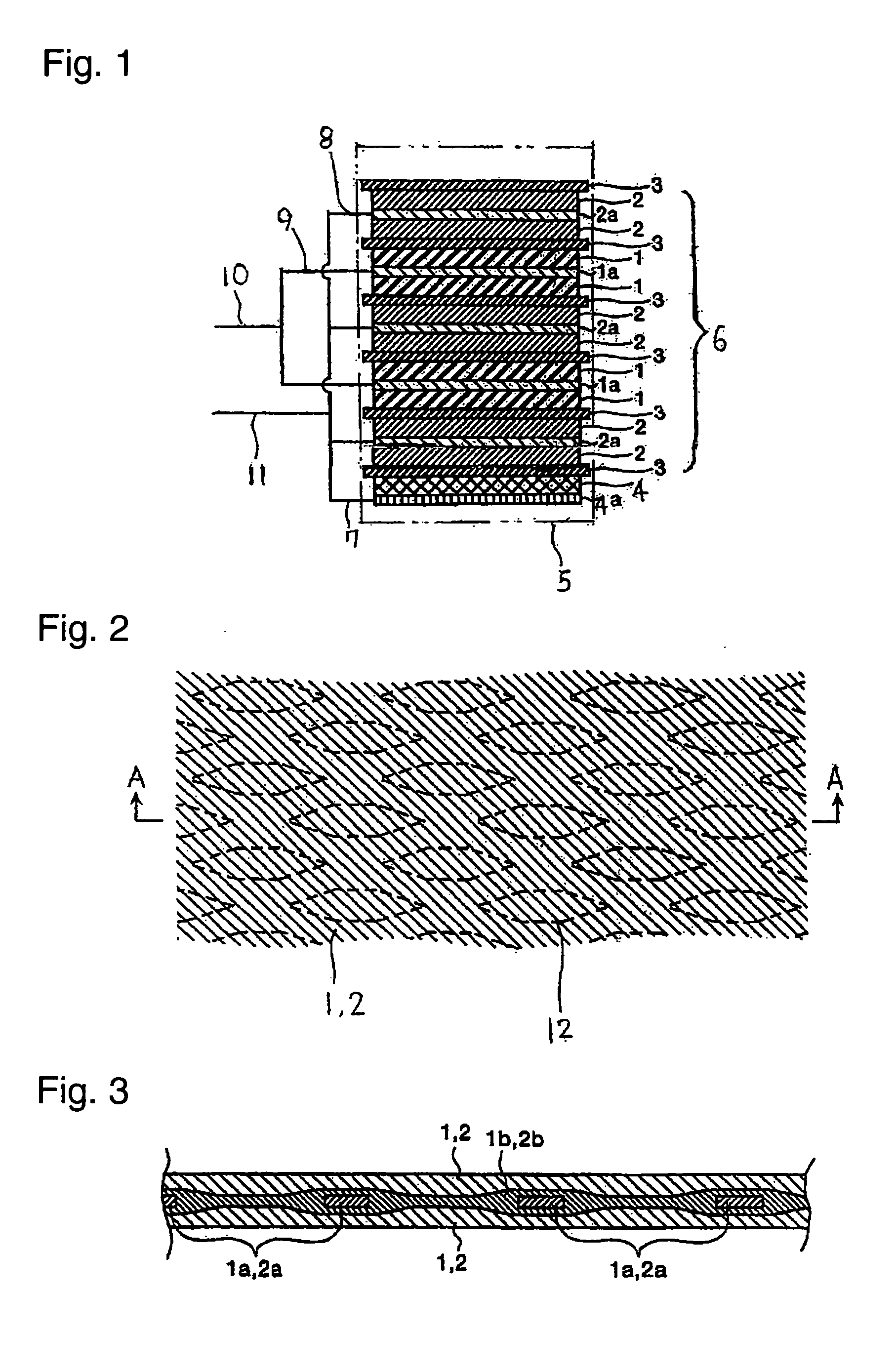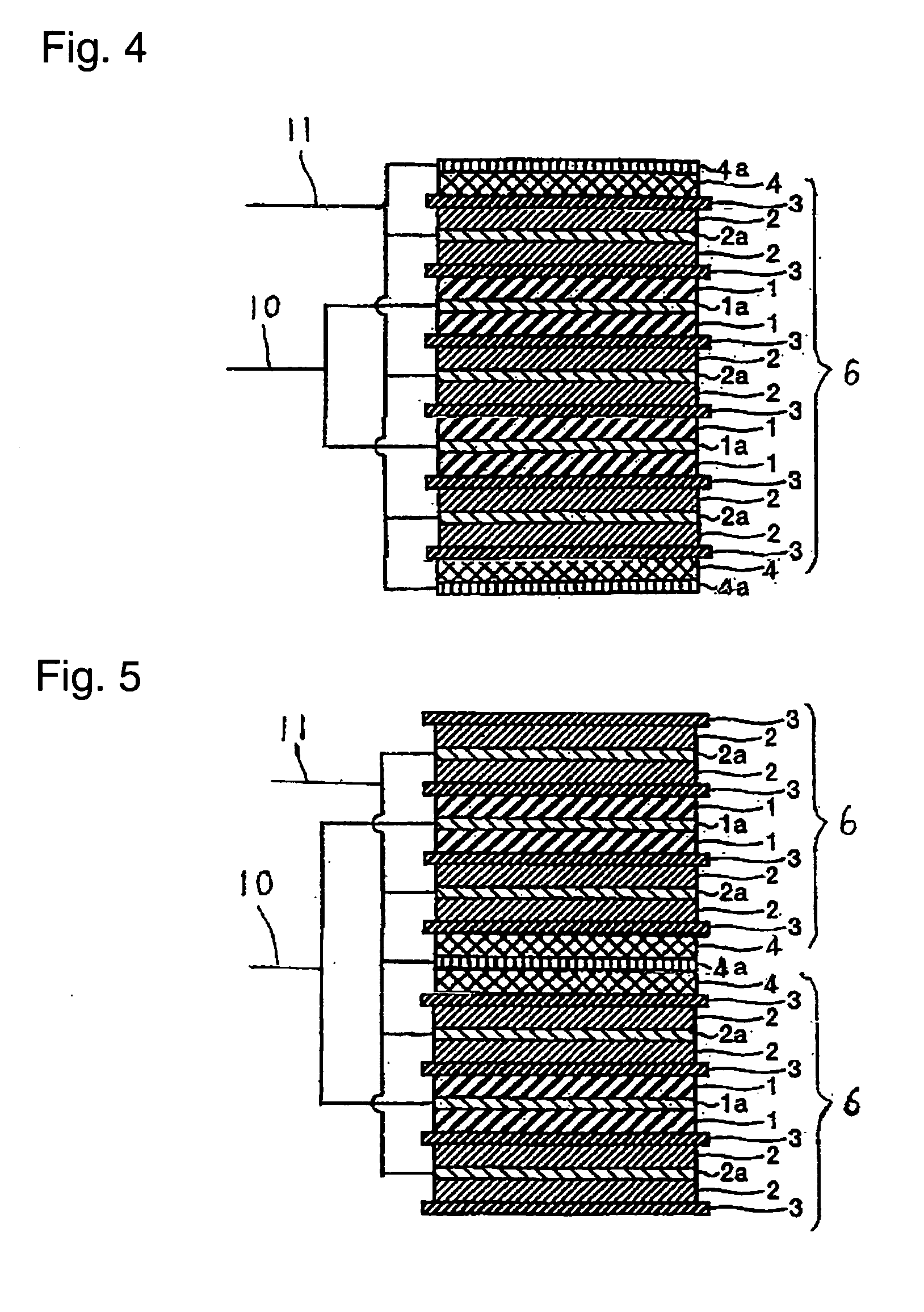Lithium Ion Capacitor
a technology of lithium ions and capacitors, applied in the direction of cell components, final product manufacturing, sustainable manufacturing/processing, etc., can solve the problems of difficult to make lithium ions be uniformly supported by the entire negative electrode, low negative electrode potential, etc., and achieve easy assembly, high safety, and improved workability
- Summary
- Abstract
- Description
- Claims
- Application Information
AI Technical Summary
Benefits of technology
Problems solved by technology
Method used
Image
Examples
example 1
Process for Producing Negative Electrode 1
[0096]A phenol resin molded plate having a thickness of 0.5 mm was put in a Siliconit electric furnace and subjected to a heat treatment by increasing the temperature at a rate of 50° C. / hour to 500° C. and further at a rate of 10° C. / hour to 660° C. in a nitrogen atmosphere thereby to synthesize PAS. The PAS plate thus obtained was pulverized with a disk mill to obtain a PAS powder. The PAS powder had a H / C ratio of 0.21.
[0097]Then, 100 parts by weight of the above PAS powder and a solution having 10 parts by weight of a vinylidene polyfluoride powder dissolved in 80 parts by weight of N-methylpyrrolidone were sufficiently mixed to obtain a slurry. This slurry was applied on one surface of a copper foil having a thickness of 18 μm in an amount of about 7 mg / cm2 as a solid content, dried and pressed to obtain a PAS negative electrode 1.
Process for Producing Positive Electrode 1
[0098]100 Parts by weight of a commercial activated carbon powder...
PUM
 Login to View More
Login to View More Abstract
Description
Claims
Application Information
 Login to View More
Login to View More - R&D
- Intellectual Property
- Life Sciences
- Materials
- Tech Scout
- Unparalleled Data Quality
- Higher Quality Content
- 60% Fewer Hallucinations
Browse by: Latest US Patents, China's latest patents, Technical Efficacy Thesaurus, Application Domain, Technology Topic, Popular Technical Reports.
© 2025 PatSnap. All rights reserved.Legal|Privacy policy|Modern Slavery Act Transparency Statement|Sitemap|About US| Contact US: help@patsnap.com



